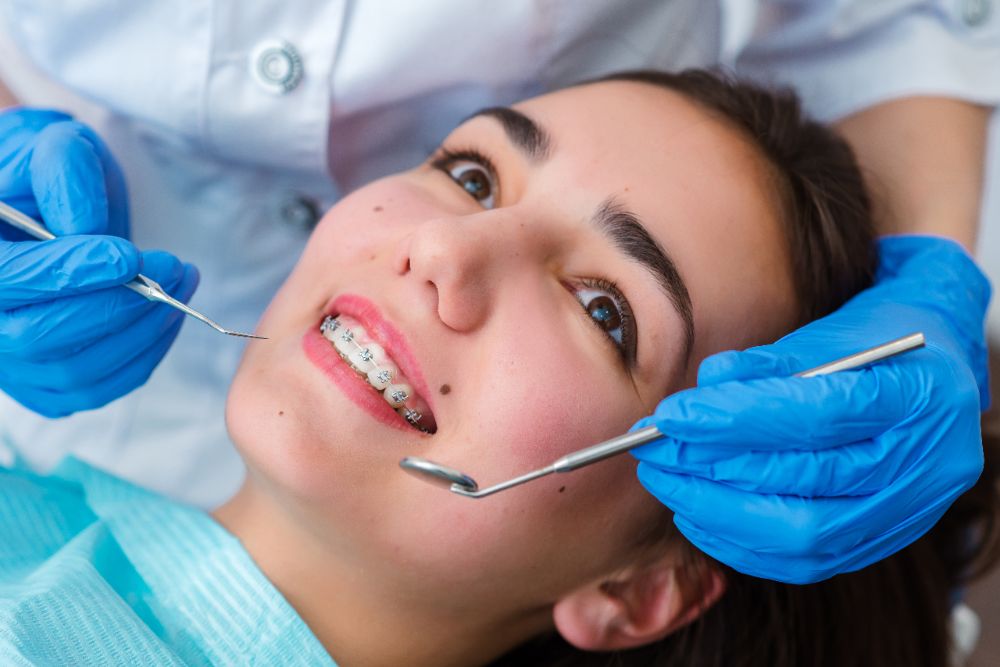The Advantages of Choosing a Cumming Orthodontist for Your Braces and Aligners
Wiki Article
Comprehensive Guide to Orthodontics Treatments for Dealing With Oral Misalignments
Recognizing the ins and outs of each procedure, including their systems, advantages, and prospective downsides, is important in making informed decisions concerning one's orthodontic treatment. As we browse with the comprehensive overview to orthodontic procedures for correcting oral imbalances, the detailed details of each approach will certainly unfold, losing light on the path towards a functional and unified dental placement.Orthodontic Procedures Summary

Along with traditional braces and clear aligners, orthodontists may also recommend other interventions like headgear, palatal expanders, or retainers to attend to certain placement concerns (cumming invisalign). These procedures are tailored per client's distinct requirements and might include a combination of treatments to achieve the desired outcomes. Regular changes and surveillance are crucial components of orthodontic therapy to make certain progress gets on track and to make any required adjustments in the process. By undertaking orthodontic procedures, clients can not just attain a straighter grin however also improve their total dental health and feature.
Standard Braces: Just How They Function
When considering orthodontic therapies for dental misalignments, traditional braces attract attention as a time-tested method for remedying teeth placing. Typical braces contain brackets, cables, and bands that function with each other to use continual stress on the teeth, gradually moving them into the desired positioning. The brackets are affixed to the teeth making use of a special adhesive, and the wires are threaded with the brackets. By readjusting the tension of the cables, orthodontists can manage the instructions and pressure put on each tooth, assisting them right into correct placement with time.
As pressure is used to the teeth via the braces, the bone bordering the teeth is reshaped to support the brand-new tooth settings. Clients will require regular changes at the orthodontist's office to ensure the dental braces continue to use the appropriate pressure for effective teeth activity.
Undetectable Aligners: Benefits And Drawbacks
These clear, customized trays are essentially unseen when worn, making them an attractive choice for people looking for a more visually pleasing orthodontic treatment. Individuals can get rid of the aligners before eating or brushing their teeth, lowering the danger of food obtaining stuck in the device and streamlining the cleansing process.
Surgical Orthodontic Options
Surgical interventions in orthodontics present feasible options for resolving complicated dental misalignments that might not be successfully dealt with via traditional orthodontic therapies. While unseen aligners and conventional dental braces can fix several orthodontic problems, particular cases need medical intervention to attain optimal results. Surgical orthodontic alternatives are generally advised for severe malocclusions, considerable jaw disparities, and cases where the underlying bone framework requires modification to accomplish appropriate alignment.One usual medical orthodontic procedure is orthognathic surgical treatment, which includes rearranging the jaws to remedy functional concerns such as problem talking or chewing. This surgical procedure is usually done in cooperation with an orthodontist who helps line up the teeth prior to and after the treatment. Surgical orthodontics might also involve procedures to subject affected teeth, eliminate excess periodontal cells, or improve the jawbone to develop an extra unified facial profile.
Before thinking about medical orthodontic choices, individuals go through a comprehensive assessment to figure out the requirement and prospective advantages of such treatments. orthodontics. While surgery may seem difficult, it can dramatically boost both the feature and looks of the smile in instances where traditional orthodontic treatments fall short
Retainers and Post-Treatment Care

Post-treatment treatment includes following the orthodontist's guidelines faithfully. This might include proper dental hygiene practices, participating in follow-up visits, and wearing the retainers as prescribed. Failing to adhere to post-treatment care guidelines can lead to relapse, where the teeth progressively relocate back towards their initial placements. Regular retainer wear, great dental hygiene, and normal oral exams are necessary for preserving the results attained via orthodontic surgery and making certain the long-lasting stability of the fixed oral positioning.
Final Thought
In conclusion, orthodontic procedures supply various options for prosthodontist remedying dental misalignments. Surgical orthodontic alternatives are available for a lot more extreme misalignments. In general, orthodontic treatments can effectively enhance oral wellness and visual look.As we navigate through the comprehensive guide to orthodontic treatments for correcting oral imbalances, the detailed information of my site each technique will unfold, shedding light on the path towards a unified and useful dental placement. - orthodontist
One of the most common orthodontic therapies is the usage of braces, which are composed of steel brackets and wires that use mild stress to slowly move teeth into the wanted placement.When taking into consideration orthodontic therapies for oral misalignments, traditional dental braces stand out as a reliable approach for correcting teeth positioning. In addition, unnoticeable aligners may not be suitable for complex orthodontic concerns that call for even more considerable teeth activity, as they are generally advised for moderate to moderate instances. Retainers are customized orthodontic tools created to hold teeth in their fixed placements after the completion of orthodontic therapy.
Report this wiki page